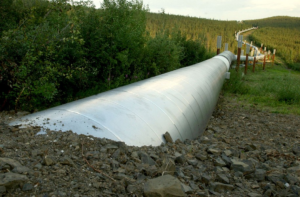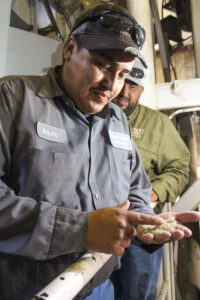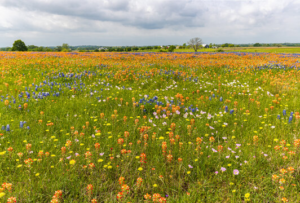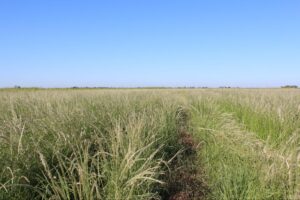Your large-scale land reclamation projects require more than just any seed mix.
From pipeline corridors to highway right-of-ways, you need the right native seed to establish long-term stability and compliance.
Choosing the wrong seed can lead to erosion, failed revegetation, and regulatory setbacks.
Here’s what contractors need to consider when selecting native seed for large-scale restoration.
1. Match the Seed to the Site Conditions

Every project has unique soil types, climate conditions, and ecological goals. A successful seed mix should reflect:
- Soil composition – Is the site sandy, loamy, or clay-heavy? Some native species thrive in poor soils, while others need richer ground. Learn what pore space is here.
- Climate adaptability – Seed should be regionally adapted to withstand local rainfall patterns, drought periods, and temperature extremes.
- Project goals – Is the focus on erosion control, habitat restoration, or regulatory compliance? The right mix depends on the primary objective. Get expert help.
Example: DOT Roadside Revegetation
State Departments of Transportation (DOTs) often require native grasses that establish quickly to prevent erosion along highways. We offer species commonly included in DOT specifications—such as Buffalograss, Sideoats Grama, and Blue Grama—that also provide long-term stabilization.
2. Prioritize High-Purity, High-Germination Seed
Not all seed is created equal. Many projects fail due to low germination rates or contamination with weed seeds. Look for:
- Pure Live Seed (PLS) Guarantee – PLS ensures that the seed you purchase is viable and capable of establishing strong vegetation.
- Third-party germination testing – Bamert Seed tests seed after harvest, ensuring accurate germination rates before you buy.
- Test seed for weed content – High levels of contaminants in seed can introduce invasive species that are costly to remove.
If you’re curious, explore the life of a Bamert seed.
3. Consider Erosion Control and Soil Stabilization Needs
Reclamation projects in oil and gas, mining, or road construction often require fast-establishing species for soil stabilization.
Seed mixes with species like Western Wheatgrass, Green Sprangletop, and Little Bluestem create root systems that anchor soil while supporting long-term ecological health.
4. Ensure Regulatory Compliance
Different agencies — whether it’s the Bureau of Land Management (BLM), DOTs, or state conservation departments — have specific requirements for native seed use.
Choosing pre-approved seed mixes can streamline approvals and avoid costly reseeding efforts.
But nothing compares to a custom seed mix created for your soil, your goals, and your restrictions. Our Reclamation Specialists are here to help — reach out.
5. Plan for Long-Term Vegetation Success
A mix that supports biodiversity ensures resilience. Instead of monocultures, opt for diverse mixes with grasses, forbs, and legumes to:
- Improve soil health
- Reduce maintenance costs
- Support pollinators and wildlife habitat restoration
Example: Pipeline Reclamation

A pipeline project in Texas used a mix of Big Bluestem, Indiangrass, and Purple Prairie Clover to establish a resilient vegetative cover, reducing erosion and enhancing biodiversity.
6. Work with a Trusted Seed Supplier

Selecting the right seed is only half the battle — partnering with an experienced supplier ensures you get expert recommendations, high-quality products, and reliable logistics.
At Bamert Seed, we’ve supplied contractors with native seed for over 70 years, offering:
- Custom seed blends for specific project needs
- Pre-tested seed with guaranteed PLS
- Expert guidance on compliance and site conditions
We’re just a quick contact form away.
Conclusion
Choosing the right native seed for large-scale reclamation projects impacts everything from erosion control to regulatory compliance.
By prioritizing site-specific mixes, high-quality seed, and biodiversity, contractors can ensure long-term project success.
Need help selecting the right seed for your project? Contact us today for expert recommendations.


